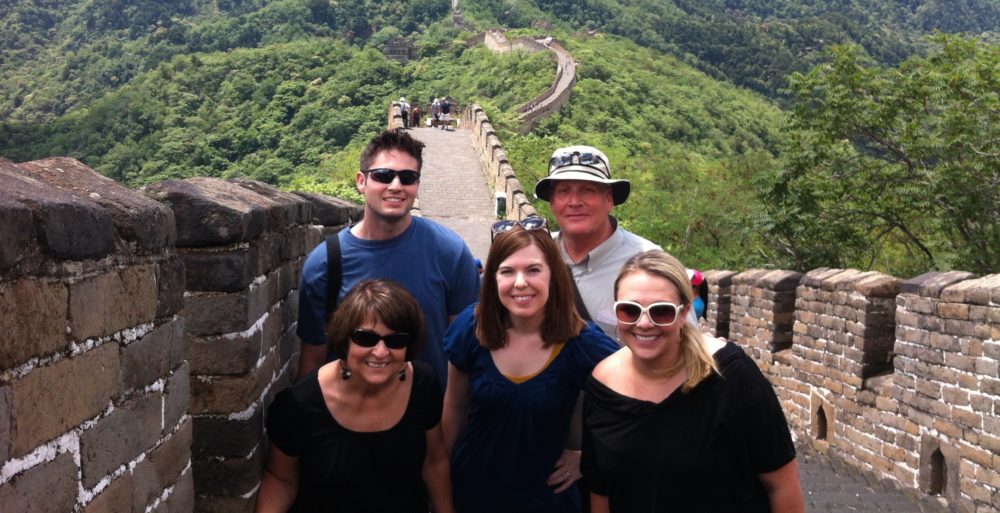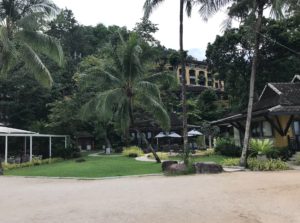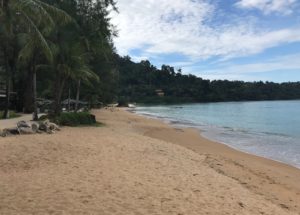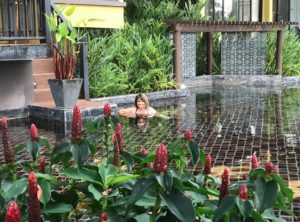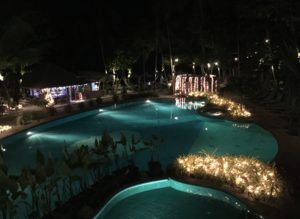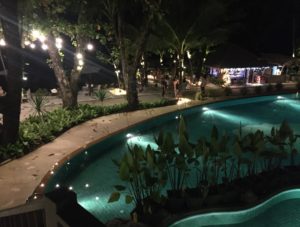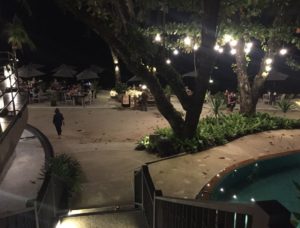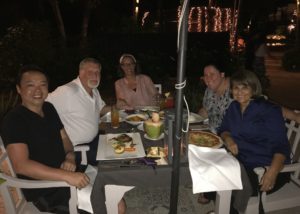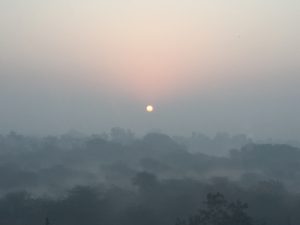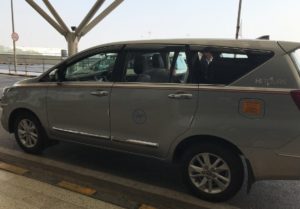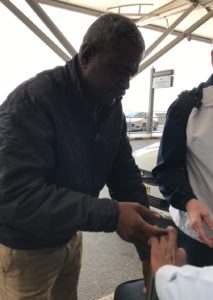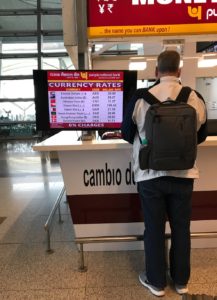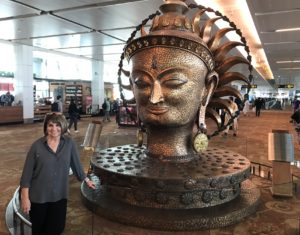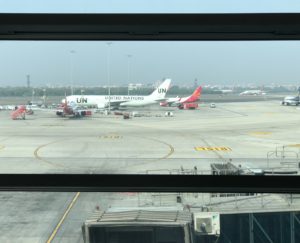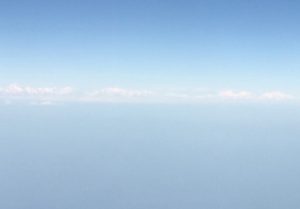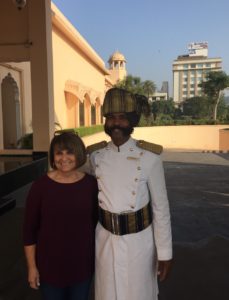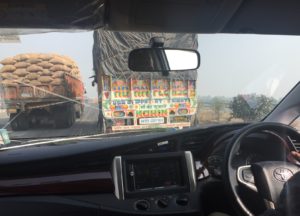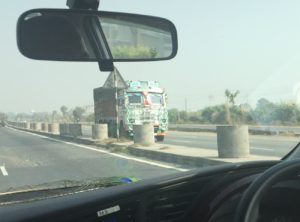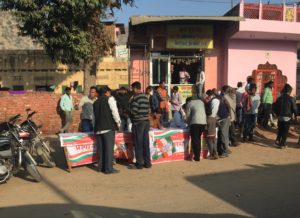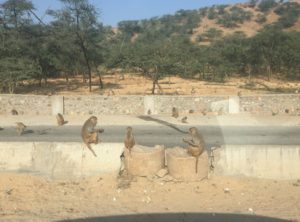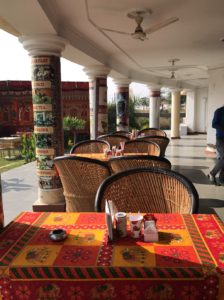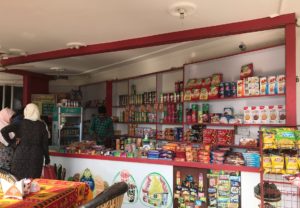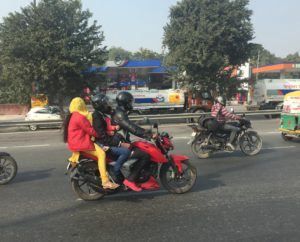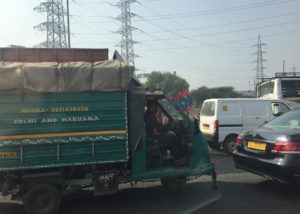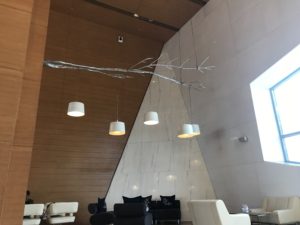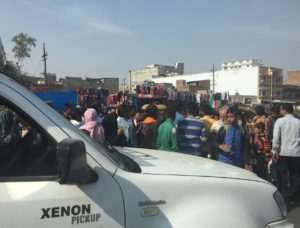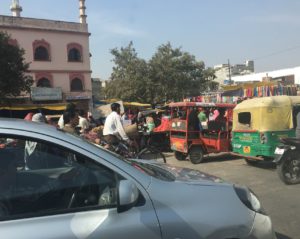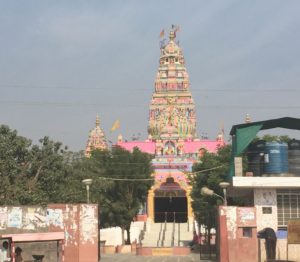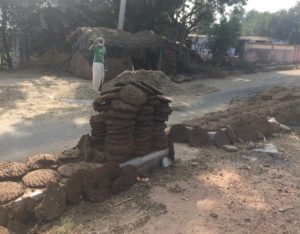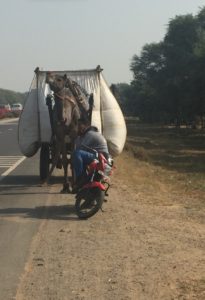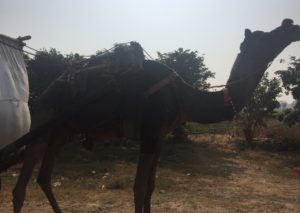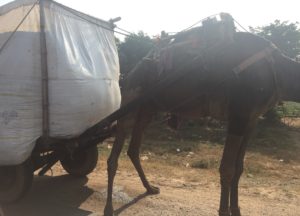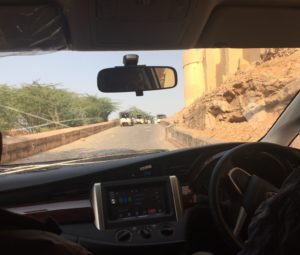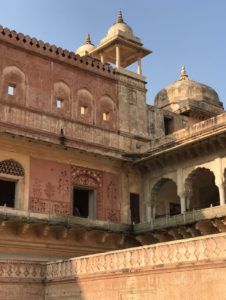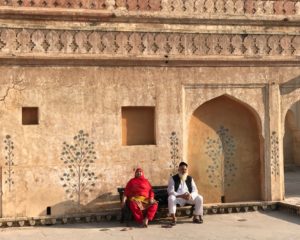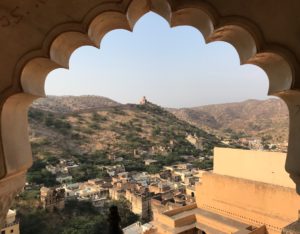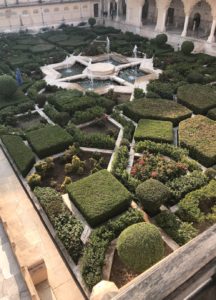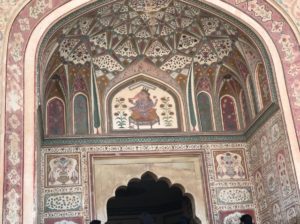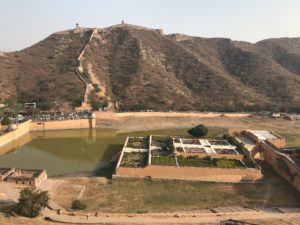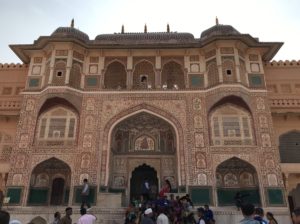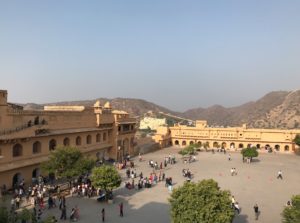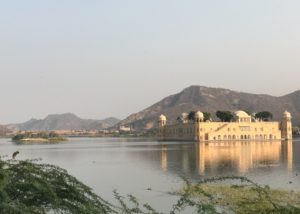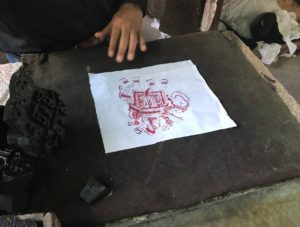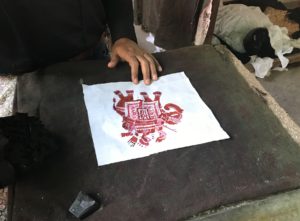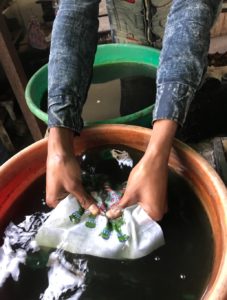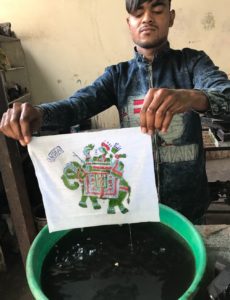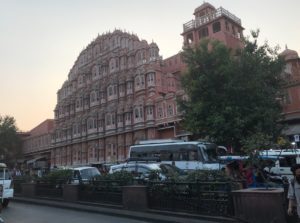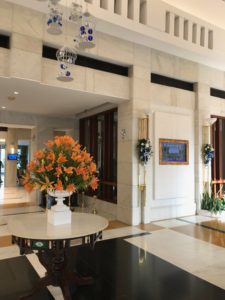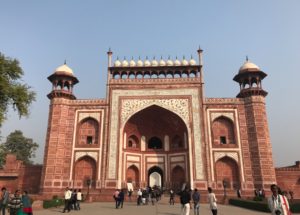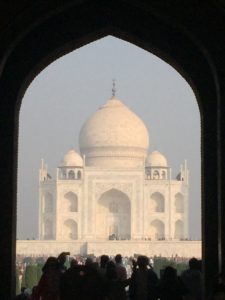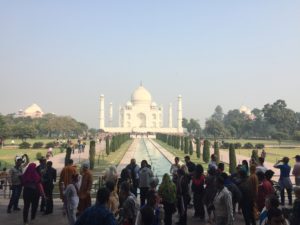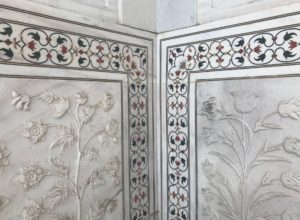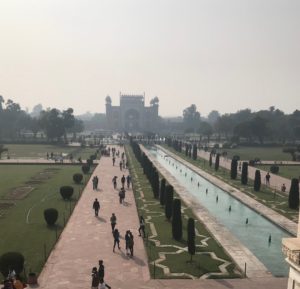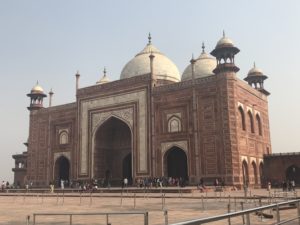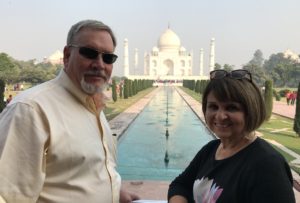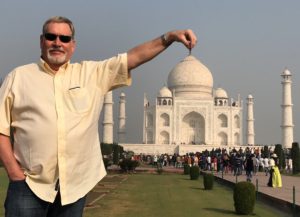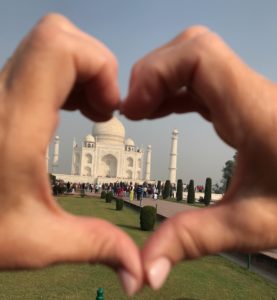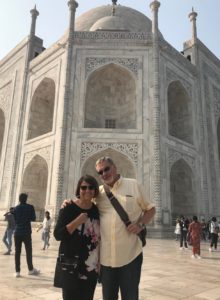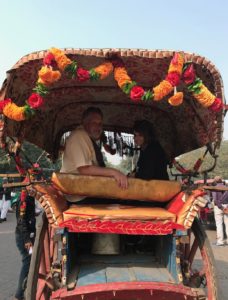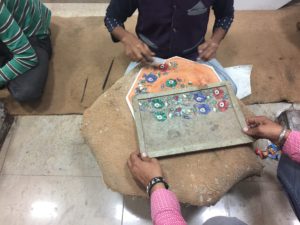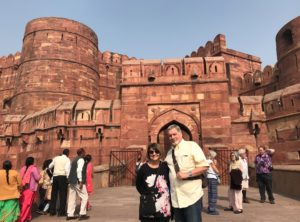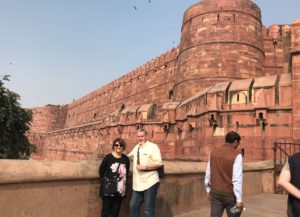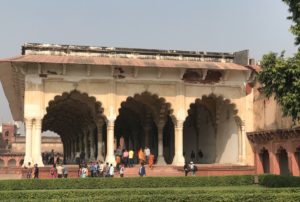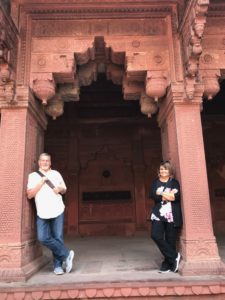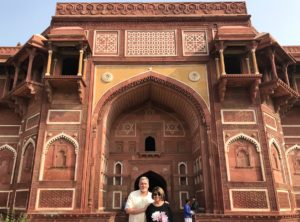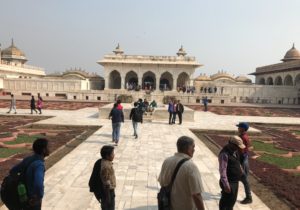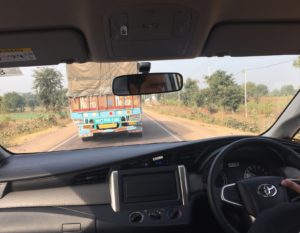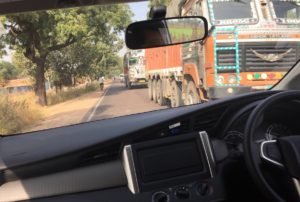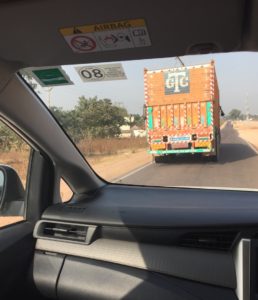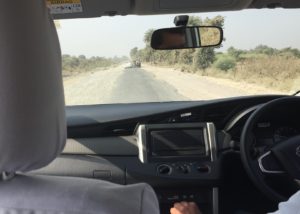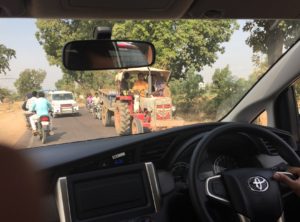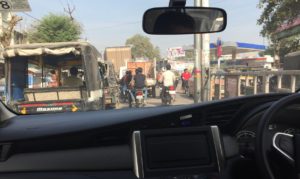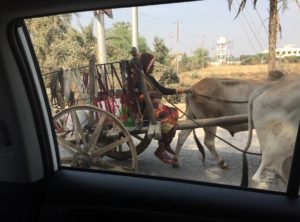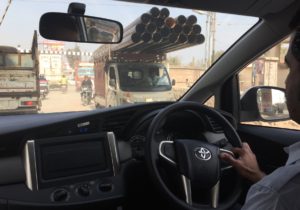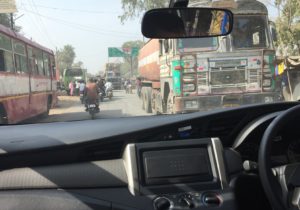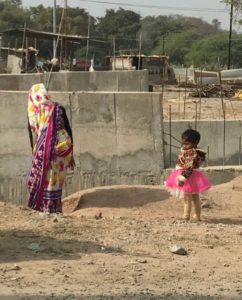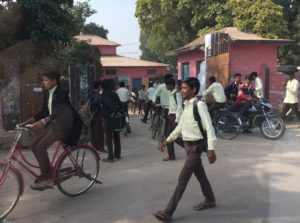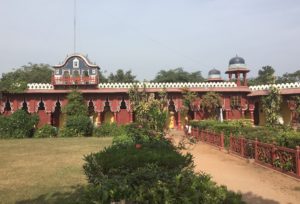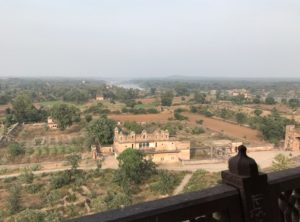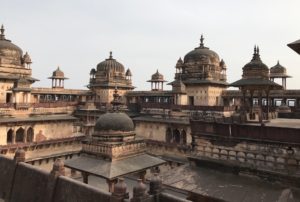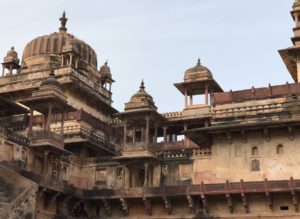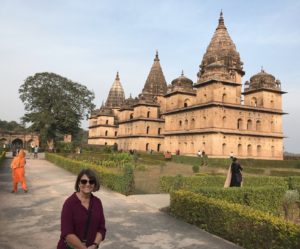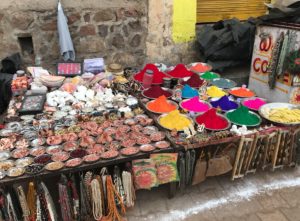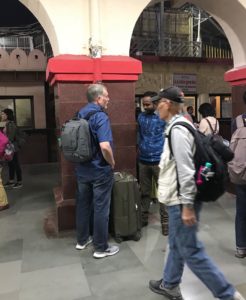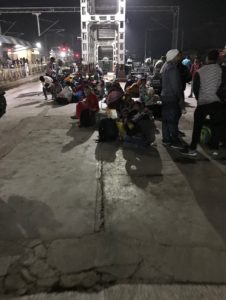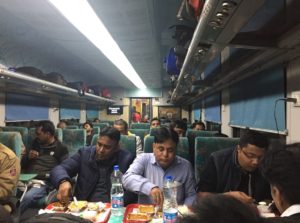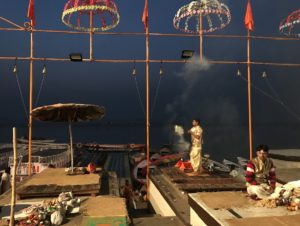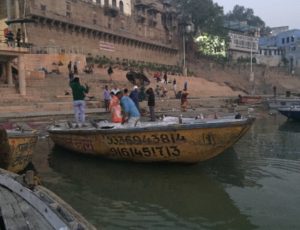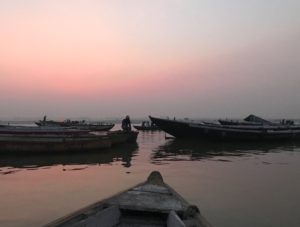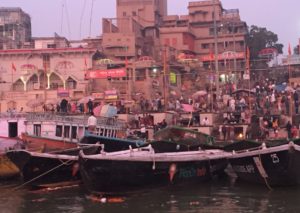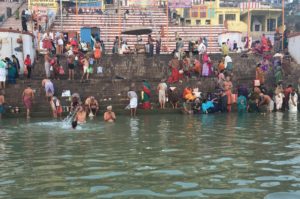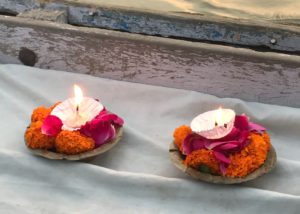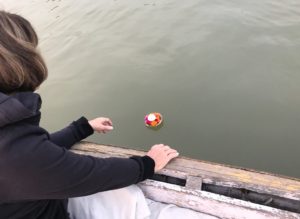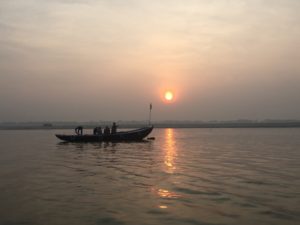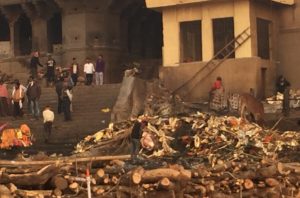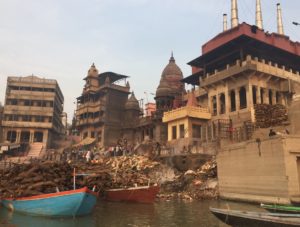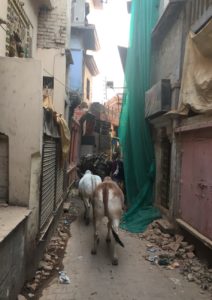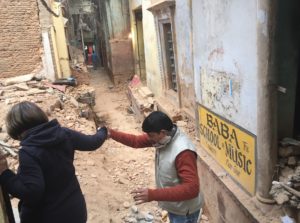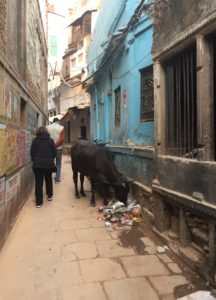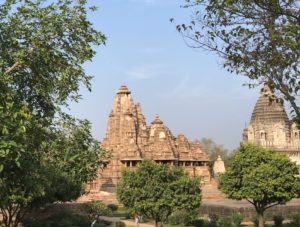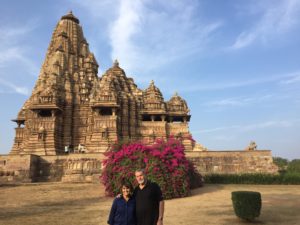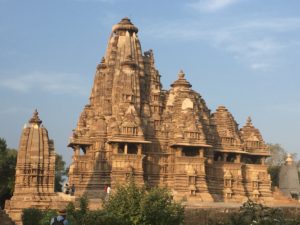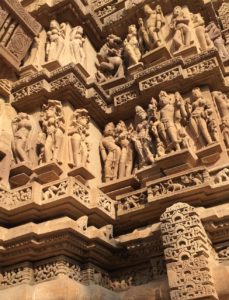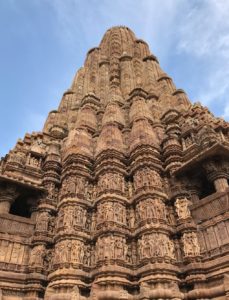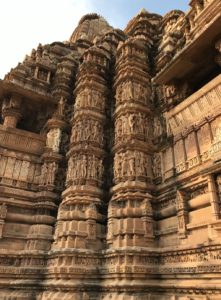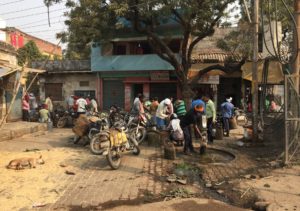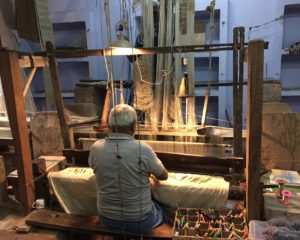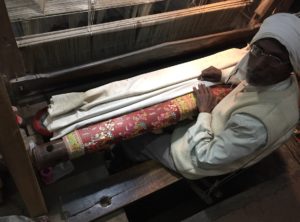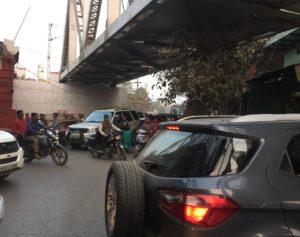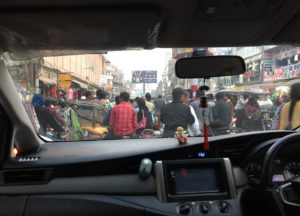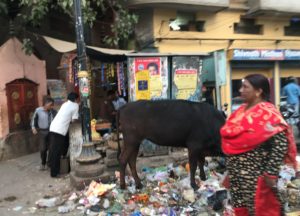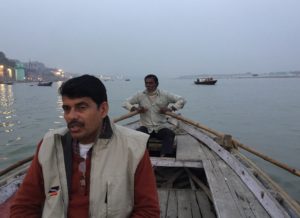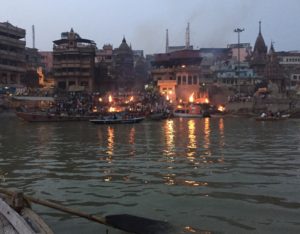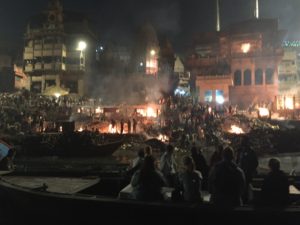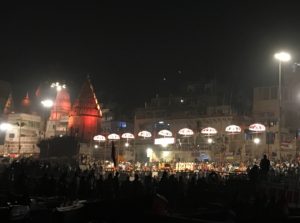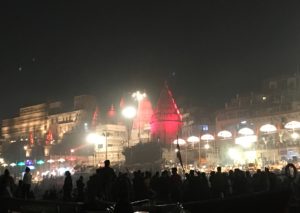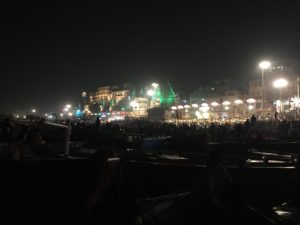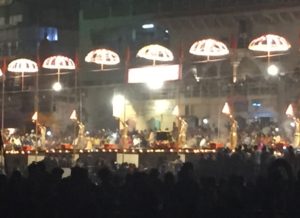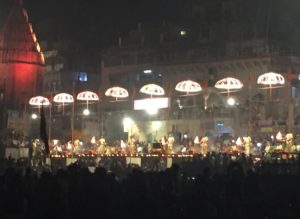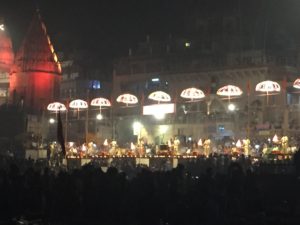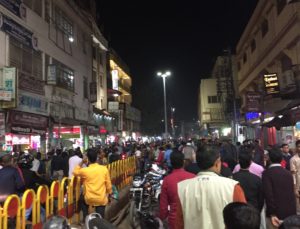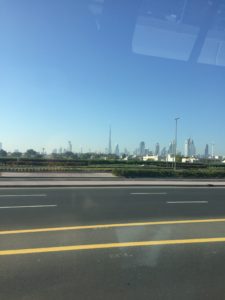We’re in a new time zone now, 11 ½ hours ahead of DFW. Weird! Breakfast was nice, but as expected, the food choices had variety, with lots of Indian options, as well as western standards.
We meet our driver at 9:00 am, and start out into the city to pick up our guide. Traffic is fairly heavy and we picked up our guide Ajit, or AJ, around 9:45. The drive is revealing as to the poverty and over-crowding. Everywhere an open spot might exist, someone has spread a blanket or erected a small tent/awning. Families are jammed together, and in the market area, the pace is frantic. We spotted a few large monkeys walking along, or climbing on the buildings or roofs.
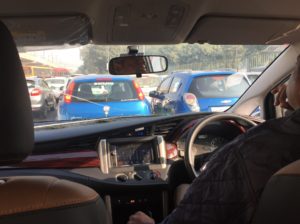 Traffic is so much like Beijing!
Traffic is so much like Beijing!
Our first stop is the Jama Masjid or Jama Mosque. It’s the first mosque built in Delhi way back in the 1600’s. It is still an active mosque with as many as 20,000 worshippers on holy days. It’s built on hill overlooking the city.
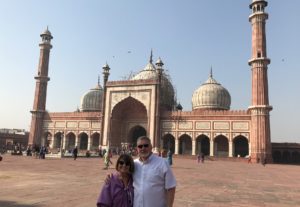 Jama Mosque
Jama Mosque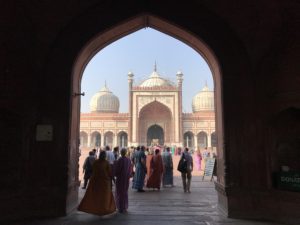
From the mosque we rode in a bicycle rickshaw in the Chandri Chowk neighborhood. It a section of “Old Delhi” and the center of the tea/spice wholesale market. We passed through narrow streets and crazy traffic, with horns honking all the time. With Judy, myself, and our guide, the driver has to work really hard with his one-speed bike. Everywhere there are small shops, tuk-tuks buzzing around, along with the occasional cow or pig.
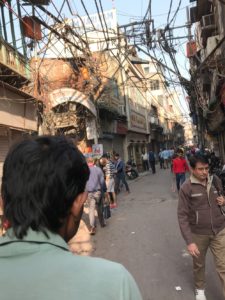 Looking over the shoulder of our rickshaw driver. Check out the wires/cables overhead?
Looking over the shoulder of our rickshaw driver. Check out the wires/cables overhead?
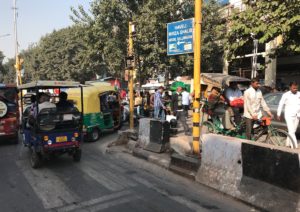
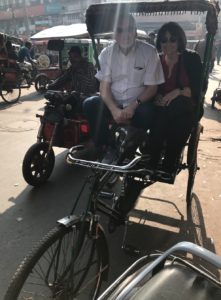 Our rickshaw!
Our rickshaw!

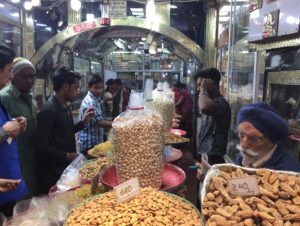
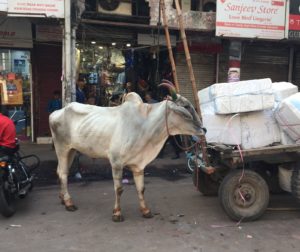
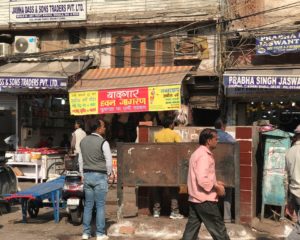 Yep, that’s what it looks like is happening!
Yep, that’s what it looks like is happening!
We climbed in a Tuk-Tuk next for a ride to the Red Fort. It’s the first fort built in Delhi, by the same Mogul king who built the Taj Mahal. It’s built on the same design as the Agra Fort, a site near the Taj Mahal we’ll visit later in the week. It is still used by the Indian army as one of it’s main buildings in Delhi.
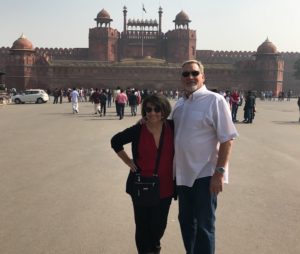
Next up is the “Cottage Industry” exhibition area. Our guide had been describing it as the place supported by the Indian government for the displaced people of Kashmir to work and exhibit the traditional industries of Kashmir. It turned out to be more of a Ginseng store, Pearl Factory, Leather shop, or any number of companies designed to get tourists in, display the product, and put on the hard sell. This shop had handmade carpets, jewelry, scarves, tablecloths, and women’s clothing. The stuff they make is gorgeous, but expensive, and not really anything we need.
We had a nice lunch with the first real Indian food since our arrival in Delhi. It’s great! Our next stop is Raj Ghat, the Mahatma Ghandi Memorial. It’s the site where he was cremated after his assassination. It’s a quiet, peaceful spot.
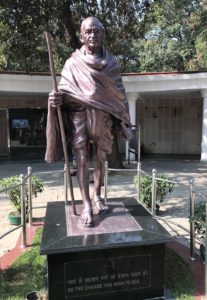
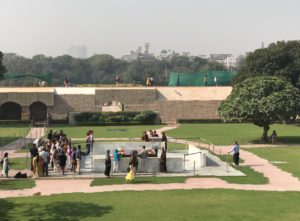
In contrast, our next stop was India Gate, a memorial to the 70,000 Indian soldiers killed in World War I. All their names are inscribed on the walls. It’s a popular place for school groups to visit. There are buses everywhere, and student groups in uniforms lined up and walking together all over the property.

Qutub Minar is our last stop in Delhi and a UNESCO World Heritage Site. It’s a huge tower commemorating a victory of a Mogul King or an invading Moslem army. It was started in 1199, completed in 1368.
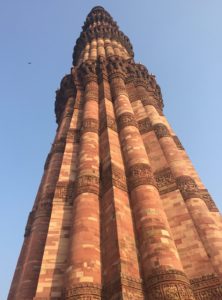
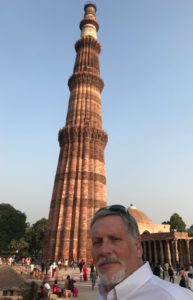
As I said earlier, everywhere we drove, the traffic was crazy and people and animals filled the streets and small shops all around. Every intersection was filled with beggars, including young children selling various items or outright begging. It’s a sad sight, and repeated at almost every traffic light.
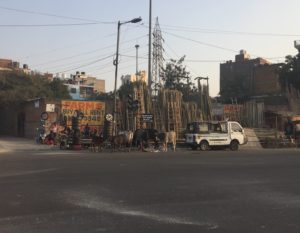
Back at the room later, we prepare for our flight tomorrow to Varanasi. We’re anxious to see what India has to offer away from Delhi.
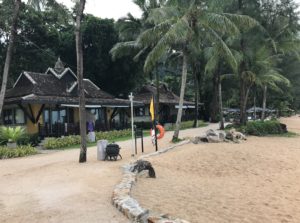 Looking over towards Dom and Shannon’s beach bungalow
Looking over towards Dom and Shannon’s beach bungalow Our room and our access to the pool
Our room and our access to the pool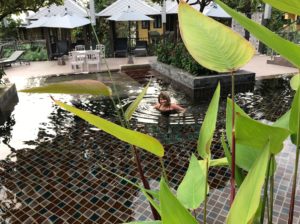 My attempt at some “artistic” touches.
My attempt at some “artistic” touches.